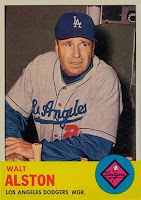
Memoirs from those involved in Watergate and the Nixon Presidency are a dicey proposition. Now, those involved in events have knowledge and insights not necessarily available from others. But, as we’re dealing with illegal and unethical activities, you can assume that the author is trying to look as good as he possibly can.
In Witness to Power, John Ehrlichman writes a very interesting biography that gives an inside look at the Nixon White House. In fact, Watergate is just a relatively minor portion of this book. And some of it is undoubtedly accurate. But, in light of what we know from the tapes, transcripts and other books on the subject, most of this tome should be taken with a grain of salt.
Subtitled The Nixon Years, he breaks out several chapters based on his experiences with different areas, such as the Nixon Cabinet, the Congress, the President’s two brothers (oh, that Donald!) and such. The first three plus quarters of the book are not about Watergate. As such, it gives an awful lot of insights on the Richard Nixon Presidency. With so many books solely about Watergate and related matters, this makes the book stand out. Much of what he has to say is quite interesting, such as the Cabinet chapter.
George Romney was a popular Michigan governor and 1968 Presidential hopeful. He also fathered the Mormon 2012 Presidential candidate, Mitt. In 1970, he was Nixon’s Secretary of Housing and Urban Development, announced a cut in his own salary to help balance the budget. Nixon disparaged it as “an ineffective grandstand play,” and said he wanted Romney fired. While Nixon juggled cabinet members, he played it like a fantasy baseball game, talking endlessly about various moves before actually doing it: Romney didn’t leave until 1973. But two days after blasting Romney, he asked Ehrlichman how they could reduce the President’s salary by $25,000; while increasing his pension by the same amount. That’s a pretty good snapshot of the type of man Richard Nixon was.
Nixon’s dealings with his cabinet member make one think of a bully. He had little respect for most of them, yet hated confrontations, so he tried to appear that he appreciated them yet refused to actually meet with them. He ran an administrative presidency, where Bob Haldeman and John Ehrlichman were more powerful than his Cabinet members. His preferred tactic was to disempower Cabinet Secretaries in hopes that they would quit, rather than force him to fire them. Ehrlichman was often the man in the middle and recounts several instances of this sort of thing. Including two near revolts from Cabinet members who resented the barriers the President had erected before himself.
To quote Nixon on the Cabinet: “I’ve wasted a lot of time on the Cabinet problem. We should put more emphasis on the subcabinet and the Administrative wives (wives of appointees)….The boats and Camp David – that has now been done, as afar as the Cabinet is concerned. No more. The Cabinet has no divine right to such things.” Nixon was a petty and power hungry man.
We also learn of Nixon’s active attempts to get rid of sitting Supreme Court judges so he could appoint his own ‘strict constructionists.’ Those early nominees are largely forgotten today, but the names Clement Haynsworth and Harold Carswell do not reflect well on Richard Nixon’s character.
Ehrlichman, not known for a sharp wit, displays such in his writing. However, his justification of his confrontational approach to the Senate Watergate Committee rings hollow and (justifiably) he clearly feels bitterness towards Richard Nixon. Nixon, who was pardoned for any crimes he might have committed, escaped Watergate scott free (having to quit your job and head into a cushy retirement because you did illegal things isn’t exactly cruel and unusual punishment) while many of his underlings, carrying out his orders and policies, went to jail. And as you might have guessed, he’s not much of a John Dean fan.
I think Ehrlichman is more culpable than he relates in the book, and he soft soaps many of Nixon’s actions (Nixon demanded the resignation of hundreds of his employees after being re-elected in 1972: nice reward for hard work. Ehrlichman dismisses this with the same gravitas as if the President didn’t like his salad dressing and sent the order back). But I also think he did work hard on domestic policy issues and did the president’s bidding, which earned him jail time and loss of his law license. This is a good look at one man’s experience working for the Nixon White House.
 |
His lasting image as a combative
witness at Senator Ervin's
Watergate Committee Hearings |
 My earliest baseball memories are of the 1974 Dodgers. So I
was excited to sit down with Paul Haddad’s High
Fives, Pennant Drives and Fernandomania. A look at the Los Angeles Dodgers
from 1977- 1981, these were the men in blue I grew up watching and reading
about in box scores. Though the west coast games often didn’t make the east
coast newspapers the following morning; I often found “Late Game,” instead of
the Dodgers’ results. In those pre-internet days, it wasn’t uncommon to go a
full day or even two before finding out who won!
My earliest baseball memories are of the 1974 Dodgers. So I
was excited to sit down with Paul Haddad’s High
Fives, Pennant Drives and Fernandomania. A look at the Los Angeles Dodgers
from 1977- 1981, these were the men in blue I grew up watching and reading
about in box scores. Though the west coast games often didn’t make the east
coast newspapers the following morning; I often found “Late Game,” instead of
the Dodgers’ results. In those pre-internet days, it wasn’t uncommon to go a
full day or even two before finding out who won!












